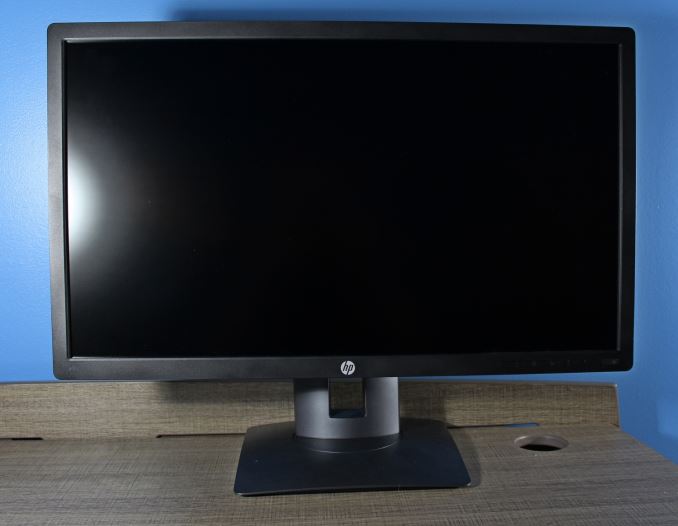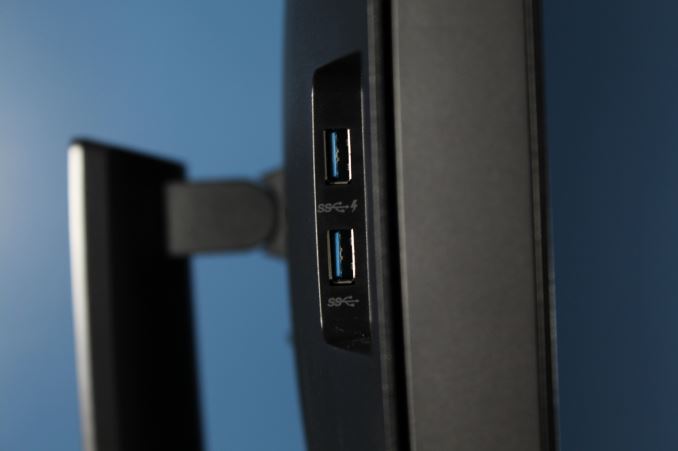HP Z27q Monitor Review: Aiming For More Pixels
by Brett Howse on December 22, 2015 8:00 AM ESTFinal Words
When HP entered the 5K market with the Z27q, the only real competition was the 27-inch Dell 5K display, but it cost close to $2000. HP came into the market with the same display dimensions and resolution, but undercut Dell by almost $800. $1200 for a display is still a lot of money, but if you are someone that needs high resolution, the HP Z27q needs to be considered.
The overall accuracy of the display is great, especially in the AdobeRGB color mode. sRGB does need some calibration of the grayscale and white point to make it practically perfect, but the calibration of the LUT at the factory by HP is quite good resulting in a decent out of the box experience. The one real issue with this display is that the backlight is uneven, dropping as high as 20% from the center when measured at the top left corner. This is pretty much the same issue that we found with the Z27x, and it would not be surprising to find that both monitors are designed similarly. It is the one blemish on an otherwise great performing display.
People looking at 5K displays have to factor in that it takes a lot of GPU power to drive these. You can’t even drive the display with a single cable; instead you have to use two DisplayPort 1.2 ports and cables to achieve the 5120x2880 resolution. This means that the display leverages MST, and while I’ve heard of people having issues with this, I did not have any issues with MST driving this display with an AMD FirePro card in Windows 10. It will still be a while before we have the DisplayPort 1.3 capabilities to drive this with just a single cable.
The construction of the HP Z27q is not going to win any style awards, but it is functional and for most people, a black monitor is all that is needed. The stand is very easy to use though, with lots of options to tilt -5° to +22°, and the swivel is plus or minus 45°.
Due to the nature of the display, input lag was not able to be tested, since the tester used is HDMI and 1080p. In my time with it, there was no noticable lag at the native resolution.
There are not too many people that need almost 15 million pixels, but there are certainly use cases for a display like this. Editing 4K video is an obvious use case, since you can have the entire 4K video in a pixel perfect window, with enough room for toolbars as well. The gamut is a long way from the Z27x offering from HP, but that is only a 2560x1440 panel. Just like the Z27x the one glaring issue is the uniformity. If HP can get on top of this, they will likely have the display to beat, especially at this price.













92 Comments
View All Comments
ImSpartacus - Tuesday, December 22, 2015 - link
And all those people look at their shiny 4k monitors and go, "well shit."It's good to see some 5k monitors hitting the market, even if there are some nagging issues like in this case.
xenol - Tuesday, December 22, 2015 - link
Not really. The PPI is too small to use at 1:1 at typical monitor viewing distances, leaving the effective resolution somewhere between 2560x1440 and 4K. 4K is barely on the edge where 27" is just too small to comfortably read at typical monitor viewing distances.It'd be going Nelson Muntz over someone who got a 1080p 5" smartphone and a 1440p 5" one came out.
ImSpartacus - Tuesday, December 22, 2015 - link
No one in their right mind would use such a monitor in default scaling. I thought it was commonly understood that you're supposed to set dpi scaling at about 200%. That's why the dimensions are literally doubled as compared to the classic 1440p for this 27" size.xenol - Tuesday, December 22, 2015 - link
Of course not, but the point is that at typical monitor viewing distances, 27" 4K is pretty much "Retina" quality. Going any further is kind of pointless, as I was trying to point out in my 1080p vs. 1440p smartphone example.It might be great for someone who does 4K video so they don't have to zoom in, and that's assuming the app is even usable at 1:1 scaling.
PixyMisa - Tuesday, December 22, 2015 - link
4K is close to "retina", but not quite. I have a 4K 28" monitor side-by-side with a 5K iMac, and there is a visible difference in some cases - text at certain sizes and weights is rendered more accurately at 5K.But it's not a huge difference, and if you're not overly fussed about typography and don't need the exact 200% scaling, 4K is already very nice.
Deelron - Tuesday, December 22, 2015 - link
Also if you're editing 4K video you can fit in on the screen at a 1:1 ratio and still have some room for tools on a 5k, which can be handy.hMunster - Wednesday, December 23, 2015 - link
You can't say "a resolution is retina" without specifying the size of the display. 4K is normal on 40", and retina on 20". 4K on 28" is some awkward in between where you need something like 150% scaling, rather than Apple's retina/HiDPI 200%.PixyMisa - Wednesday, December 23, 2015 - link
You also need to specify the distance - and the retina. And the type of detail being discussed, since there's an order of magnitude of difference between our visual acuity for colour in moving images and alignment of lines in a black and white image.bhtooefr - Saturday, December 26, 2015 - link
Technically, Apple's definition of "retina display" is 20/20 vision, unable to distinguish pixels, at typical viewing distance. (IIRC, they use 12" for the iPhone, 18" for the iPad, and probably 20" for the Macs.) That's 60 pixels per degree, or (as high as) 30 cycles per degree. But, you do need distance and pixels per inch to determine cycles per degree.OSHA preferred viewing distance to a computer monitor is 20-40". A 28" 4k monitor reaches Apple's retina standard at 43.7" away or further - outside of the allowable range.
Flunk - Tuesday, December 22, 2015 - link
200% scaling on a 27" 5K monitor would make everything pretty damn big. I'm running 200% scaling on my 15" 4K notebook.